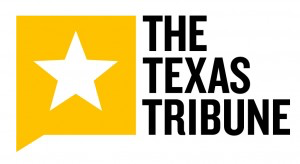"Uvalde shooting and its aftermath"
INVESTIGATIVE CATEGORY
The Texas Tribune
05/24/2022
The Texas Tribune mobilized its entire newsroom to cover the second-deadliest school shooting in U.S. history — a shooting that prompted Congress to enact the first significant gun legislation since 1996. We leaned into our expertise on politics and public policy to provide immediate context for readers and respectful, compassionate coverage of the community.
Our prominently featured coverage used data, images, video, audio recordings and exclusive access to investigative materials to produce revelatory stories about blame-shifting by state officials, 911 calls from inside the school, and the delayed EMS response.
Tribune staffers also constructed a detailed timeline of the shooting, from the day the gunman purchased the rifle he would use to the moment law enforcement finally secured the school and evacuated the survivors — we have continued to update that timeline as new details emerge. And we built a separate timeline that traces the eight major mass shootings in Texas over the past year, combined with any new policies or gun-related laws passed by Texas lawmakers as a result of those tragedies.
We were the first news organization to review surveillance footage from inside the school, using the video, along with transcripts of emergency communications and a chronology assembled by law enforcement, to meticulously describe the 77 minutes that elapsed before the gunman was killed.
Tribune journalist Zach Despart led an effort that got us access to footage and 911 calls from May 24 that provided new insight into what happened with the police response. Analyzing that information required a systemic and careful review of hundreds of hours of footage. That led to a Nov. 1 story, done in partnership with Lomi Kriel, a member of the Tribune and ProPublica’s shared investigative unit, and Tribune reporters Alejandro Serrano and Roxanna Asgarian, that shows how long police and dispatchers likely knew that children and teachers were in danger before taking action.
We published a package in collaboration with ProPublica and The Washington Post. The Post is one of few news organizations to employ a visual forensics team, which was indispensable in analyzing reams of photos and videos to produce a minute-by-minute account, accompanied by graphics and an analysis of events from multiple angles, of the delayed EMS response that likely cost Eva Mireles her life. We partnered with them to produce a package that avoided publishing graphic or traumatizing images.
The Texas Tribune, along with our partners at ProPublica, filed more than 100 public records requests, yet officials refused to substantially fulfill any of them. They say an investigation is ongoing — even though the only suspect is dead. We are the named plaintiff in a suit against the Texas Department of Public Safety (including the Rangers investigative unit) and a lead plaintiff in a separate lawsuit seeking records from the city and county of Uvalde. This is an expensive fight, but one the Tribune believes in to help bring transparency and accountability - and hopefully to help bring some bit of resolution to a still-grieving community.
Our May 26 article, “Texas already ‘hardened’ schools. It didn't save Uvalde,” was cited on the floor of the U.S. House on June 8 and entered into the Congressional Record. In a September 22 report, the U.S. House Committee on Education and Labor cited our body of coverage in urging mental health treatment for survivors of school shootings.
We know that our coverage was read by U.S. Senator John Cornyn of Texas, the chief Republican negotiator of the Bipartisan Safer Communities Act of 2022. It adopted tougher background checks for gun buyers younger than 21, approved $15 billion for mental health programs and school security upgrades, encouraged states to implement “red flag” laws to remove firearms from dangerous individuals, and closed the so-called boyfriend loophole by blocking gun sales to individuals convicted of abusing their unmarried partners. It was the first significant federal gun legislation since the 1994 assault weapons ban (now expired) and since the U.S. Supreme Court in 2010 declared handgun ownership to be a constitutional right.
Our coverage has been republished on the front pages of newspapers statewide and has been cited by peer media organizations. Highlights include:
Columbia Journalism Review article, “A massacre in Uvalde, and the ‘numbing script’ of gun-violence coverage” (May 25, 2022)
Vanity Fair article, “News media considers breaking grimly routine coverage of mass shootings” (May 26, 2022)
Brian Stelter CNN “Reliable Sources” podcast, “‘It never lets up in Texas’: Sewell Chan on the Texas Tribune’s coverage of the Uvalde school shooting and more (May 26, 2022)
Shorenstein Center article, “Should news outlets show graphic images of mass shooting victims? Researchers and other experts weigh in.” (June 28, 2022)
Journalist’s Resource webinar, “Prioritizing mental health in the newsroom: 5 tips to get you started” (Jan. 20, 2023)
After the tragedy, the American Psychological Association found that mass shootings have worsened Americans’ collective mental health. We are proud of how we’ve covered this horrific tragedy with care and thoroughness. We thank you for considering this work for the Headliners Foundation award.
MAIN LINK to content online
LINK 2 to content online
LINK 3 to content online
LINK 4 to content online
LINK 5 to content online
LINK 6 to content online
LINK 7 to content online
LINK 8 to content online
LINK 9 to content online
LINK 10 to content online
LINK 11 to content online
Submitted by Sewell Chan.

